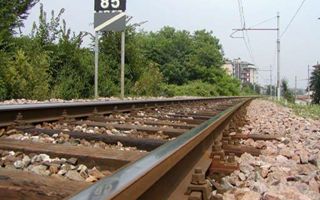(Finance) – Il 2025 will be a crucial year for Italian rail mobilitywith the FS Italiane Group committed to driving important progress in the construction sites of strategic works for the future of the country.
There Brescia-Verona HS/AC line, the Florence HS Passante and the Naples-Bari HS/AC line they are at the center of a video dedicated to the story of the progress of these construction sites. The three projects, carried out by Rete Ferroviaria Italiana and Italferr, with a total value of around 21 billion euros, will not only improve the efficiency of connections, but represent a decisive step towards more sustainable, safe and connected mobility at a European level.
Construction sites that are not simple infrastructures, but concrete visions for a future in which the reduction of travel times, the increase in safety standards and attention to sustainability will become central elements of Italian mobility.
High Speed Brescia-Verona-Padua: the heart of the Mediterranean Corridor
An integral part of Core Corridor Mediterraneo, the new HS/HC Brescia-Verona line it extends for approximately 48 kilometers and will connect the municipality of Mazzano, in the province of Brescia, with Verona, crossing two regions, three provinces and eleven municipalities.
Among the main works stands out the tunnel system in Lonato del Garda, 7,950 meters long. The infrastructure includes 4 viaducts, 15 overpasses, 4 natural and 17 artificial tunnels. These interventions, fundamental for the completion of the line, are part of a European-wide project that will connect the ports of the southern Iberian Peninsula with Eastern Europe, passing through Northern Italy.
High-speed bypass in Florence: sustainability and technology under the city
The Florence High Speed Passante involves the construction of an underground line composed of two parallel tunnels, intended to separate the flows of long-distance trains from regional ones, with the consequent improvement in the regularity of circulation and an increase in the capacity of the Florence hub.
The TBM (Tunnel Boring Machines) Iris and Marika they are currently working to dig the tunnels necessary for the railway undercrossing. Iris has completed 1.8 kilometers of the northward track, while Marika has started excavating the southward track tunnel.
A distinctive element of the project is the sustainability: the earth from the excavations will be reused to renaturalise the former Santa Barbara lignite quarry, with transport carried out exclusively via freight trains to reduce the environmental impact. The Passante also includes the new Firenze Belfiore station, located approximately 25 meters deep and with a surface area of 45,000 square metres, designed to become a strategic hub for mobility.
AV/AC Naples-Bari: speed and integration for the South
With its 145 kilometers of line, the Naples-Bari high-speed project is part of the European TEN-T program, improving the integration of Southern Italy’s infrastructure in the Core Corridor”Scandinavia-Mediterranean“.
Upon completion of the work, the connection Naples-Bari will be covered in just two hourscompared to the current four, while the one between Rome and Bari will only take three hours, with a saving of around two hours. The project involves the construction of a new double-track line between Naples and Foggia, which will guarantee greater capacity and a significant reduction in travel times.
An increasingly sustainable and connected mobility
The three works represent a fundamental piece for the future of Italian and European mobility. In addition to reducing travel times and improving service reliability, these projects reflect the commitment to sustainable and environmentally friendly mobilitycapable of enhancing territorial connections and promoting fair and lasting development.
